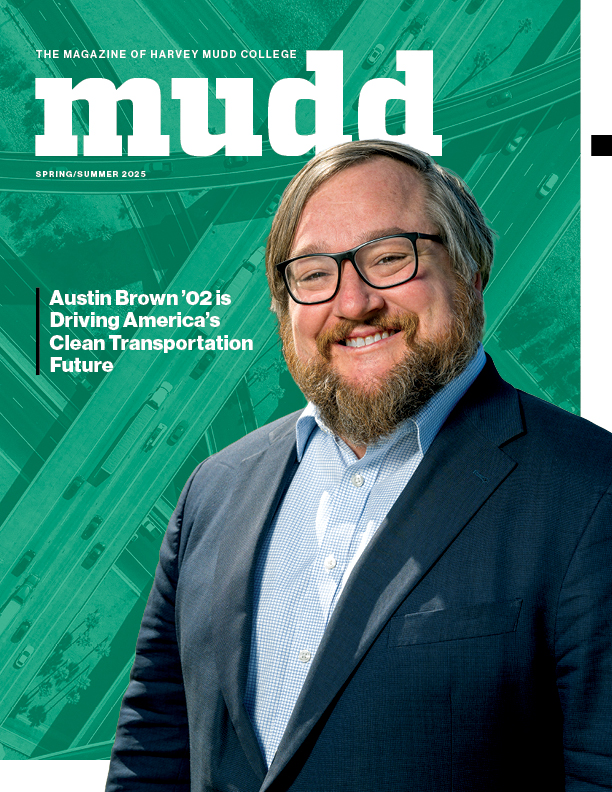Harvey Mudd College Earns New Carnegie Research Designation
May 23, 2025
Harvey Mudd College has received the new Carnegie Classification for “Research Colleges and Universities,” reinforcing its distinctive research program that provides opportunities for its undergraduate-only student body to engage in meaningful, leading-edge discovery.
The designation, awarded by the American Council on Education and the Carnegie Foundation for the Advancement of Teaching, recognizes institutions with at least $2.5 million in research and development expenditures and includes institutions who do not award a significant number of doctoral research degrees. Harvey Mudd spends about $4 million annually on research activities and is among the 216 institutions with this designation.
“Harvey Mudd College offers unparalleled, hands-on opportunities in both the laboratory and the field,” says President Harriet Nembhard. “Students partner with faculty and are major contributors—often co-authoring papers and presenting alongside faculty at academic and professional conferences. A goal of the College’s Strategic Plan 2025–2035 is to enhance opportunities for research, innovation and societal impact.”
Students work as colleagues alongside faculty, who conduct cutting-edge research spanning biology, chemistry, computer science, engineering, mathematics, physics, humanities, social sciences and the arts, and interdisciplinary fields such as computational biology and bioengineering. Most students graduate having completed more than a year of research—during the academic year or through the Summer Research Program—and many go on to graduate programs where these experiences prove invaluable. Harvey Mudd College ranks No. 2 in the nation for graduates earning the PhD, per capita.
Faculty are awarded research grants from the National Science Foundation and other funding sources to advance scientific knowledge. Research highlights include:
- A $10,000 seed grant by the Social Science Research Council’s Sloan Scholar Mentoring Network to fund research on printing biomaterials for tissue-engineering applications.
- A $503,000 National Science Foundation grant to support an interdisciplinary project to enhance the understanding of cell communication.
- A $560,428 National Science Foundation CAREER award for the project “Next-generation Rhizosphere Monitoring – Non-invasive Plant Phenotyping and Health Monitoring Using the Light-piping Properties of Plant Stems.”
- A $55,000 grant from the American Chemical Society’s Petroleum Research Fund to explore the molecular structures of succinimide derivatives while providing invaluable learning experiences for students.
- A $7,250 grant from the ASIANetwork (a consortium of liberal arts colleges) supporting partnership to establish a Marshallese oral history archive of Southern California.
- A $402,235 CAREER grant from the National Science Foundation for a project that aims to develop new computational techniques that help solve large-scale mathematical problems in fields like data science and optimization.
Additional classifications for Harvey Mudd College:
2025 Institutional Classification (new)– Special Focus: Technology, Engineering and Sciences
For this classification, the Carnegie Foundation “organizes institutions based on a fuller set of dimensions, including a wider look at the types of degrees they award, the subjects in which they award degrees, and the size of the institution.” There are 42 schools in this classification, representing 1% of U.S. colleges and universities.
Student Access and Mobility Classification: Lower Access, Higher Earnings
A classification “that examines the extent to which an institution is enrolling students who reflect the communities it serves and whether an institution’s former students go on to earn competitive wages compared to peers in their area.” This ranking represents 10% of U.S. colleges and universities in the Student Access and Mobility classification.
The Carnegie Foundation and the American Council on Education released the fully redesigned Carnegie Classifications as part of an ongoing effort to make the classifications more useful, relevant and reflective of the nation’s ever-evolving higher education landscape.
